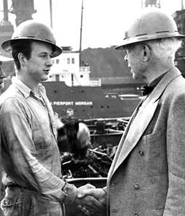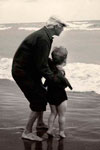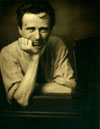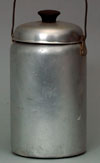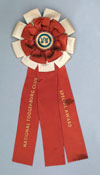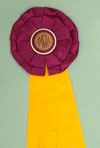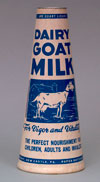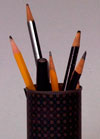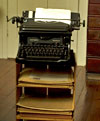|
Linda Mazzei, WD Williams Elementary, Swannanoa, NC
Symantha Petitt Gragg, Brevard College, Brevard, NC
Jodi Huggins, Brevard College, Brevard, NC - 6-12
- 5 lessons, 60-90 minutes each
[Back to top]
|
- Carl Sandburg Home National Historic Site Flat Rock, North Carolina
-
This unit plan focuses on Connemara, Carl Sandburg’s Home in Flat Rock, NC, as an elemental part of his life and writings, his “rock,” during the last quarter of his life. Sandburg was known to go to a favorite rock outcropping on his property for inspiration in his writing. Connemara provided Carl Sandburg with an anchor of stability, creativity, and adventure, while being surrounded by family. Connemara was home to Carl Sandburg’s wife, Lilian (Paula), his daughters Margaret, Janet, and Helga, and his grandchildren, John Carl and Paula. Connemara and its rich resources tell a wonderful story about the Sandburg family and the influences that the home and family had on Sandburg’s writing. In this unit plan, students will observe and analyze objects and photographs from the Sandburg home, interpret the poetry and stories of Carl Sandburg, and discover the strong connection between Connemara and the writer.
Using photographs and objects from the Sandburg home at Connemara, students will investigate Sandburg’s home life, work habits, and the goat dairy that were essential to his life there. Students will be asked to compare Sandburg’s home life to their own, identifying objects from their own homes that represent their home life.
Using poems written by Sandburg, students will make connections between his writings, philosophies, and home life. Students will be asked to analyze possible meanings of his poetry and writings and then to compare the poems to selected objects and photographs from his home life that link his writings and his home life. Students will also write their own poems that provide insight into their own lives and philosophies.
(The Rootabaga Stories)
Students will explore and discover a different side to Carl Sandburg as a writer. Mr. Sandburg felt that American children needed their own fairy tales, as opposed to European fairy tales. Written first for his own children and grandchildren, the Rootabaga Stories is a collection of fun, zany stories that use the American landscape as its setting. In this lesson, students will read one of Sandburg’s children’s stories and select an excerpt of the story with which to practice the art of storytelling.
Students will make connections between life at Connemara and contemporary issues and events of that time period (1945-1967) by examining objects from the home that demonstrate the Sandburg’s’ way of life and how those items were indicative of the time period. Students will also read letters and poems that correspond to the selected objects to provide context for the objects and their connection to the greater world of that time period.
Students will participate in an exhibit-in-a-box project. They will create boxes containing objects taken from their homes that reflect their home life, work habits (study habits), and hobbies. In addition to the artifacts, the boxes will also contain poetry written by the student, curatorial notes on the artifacts, and a written justification of their selection of artifacts and how they compare to similar objects from the Sandburg home. They will share these boxes with classmates at the “exhibit opening”.
-
Why can Connemara be considered to be Carl Sandburg’s “rock?” How did Carl Sandburg’s home and home life contribute to his writings and reflect the philosophies he exhibited in his poetry and writings?
-
Have the students bring in their favorite writing instrument: lead pencil, mechanical pencil, gel pen, colored pencil, Sharpie, or ink pen in any color. The writing instruments will be used when the students preview museum object CARL348, an image of the thick lead pencils Carl Sandburg would use while writing. Unlike a real museum object, these items can be safely handled by the students. They promote local products for the museum object.
[Back to top]
|
| MUSEUM OBJECT [photos of objects in the Carl Sandburg Home NHS museum collections] |
SIMILAR OBJECTS [local items similar to museum objects] & OTHER MATERIALS |
Length of time |
|
An object that represents teacher’s personal heritage (examples: family bible, grandfather’s walking stick, etc.
[similar to the museum objects in the Sandburg museum collection]
- Cigar box
- Six cardboard boxes or cigar boxes to hold museum objects for lesson
- Cardboard boxes for student–created exhibits (or have students supply their own)
- Transparencies or multimedia software program (such as PowerPoint) for projecting images of museum objects
- LCD projector or overhead projector Internet access to download museum objects
- Printer
- Laminator (if possible)
Books
- The Complete Poems of Carl Sandburg by Carl Sandburg
“Prayers of Steel”
”Boxes and Bags
- My Connemara by Paula Steichen
- The Sandburg Treasury: Prose and Poetry for Young People
- or The Rootabaga Stories by Carl Sandburg
- Letters of Carl Sandburg, edited by Herbert Mitgang
- Chicago Poems by Carl Sandburg
CD/DVDs
Writing Materials:
- Notebook paper, pens, pencils
Art-making materials:
- Six boxes to hold photographs of objects used in lesson 1
- Empty boxes for student project (or students may supply their own)
Technology:
- Internet access
- Printer
- Laminator (if possible)
- Multimedia presentation software (such as PowerPoint) and LCD projector OR
- Transparencies and an overhead projector
|
50 – 60 minutes |
 |
|
Soup Tureen |
|
 |
 |
Paula |
Ms. Helga with
her children |
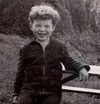 |
 |
John Carl |
Binoculars |
 |
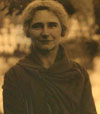 |
Carl and Lillian Sandburg |
Lillian Steichen |
 |
 |
Toaster |
Mr. Sandburg with Grandkids |
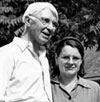 |
 |
Carl Sandburg with Daughter |
Carl Sandburg |
|
[similar to the museum objects in the Sandburg museum collection]
Books
- The Complete Poems of Carl Sandburg by Carl Sandburg
“Soup”
“Paula”
“Bluebird, What Do You Feed On?”
“Explanations of Love”
“Fellow Citizens”
My Connemara by Paula Steichen
“Karlen Paula”
“some proclamations to an old stump”
“John Carl”
Chicago Poems
“Margaret”
- Transparencies of museum objects with overhead projector (or digital slideshow using LCD projector)
- Printed and laminated photographs and objects from museum collection
- Notebook paper
|
50 – 60 minutes |
 |
|
| Sandburg Family |
|
|
[similar to the museum objects in the Sandburg museum collection]
- The Sandburg Treasury: Prose and Poetry for Young People
- or The Rootabaga Stories by Carl Sandburg [“How to Tell Corn Fairies if You See ‘EM”]
- Carl Sandburg: A Walk at Connemara (audio CD) (optional, but highly suggested)
|
50 – 60 minutes |
 |
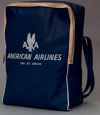 |
Thermos and Tray |
Travel Bag
|
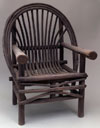 |
|
Chair |
|
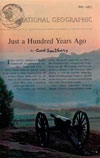 |
|
National Geographic Article |
|
|
[similar to the museum objects in the Sandburg museum collection]
Books
- The Complete Poems of Carl Sandburg by Carl Sandburg
“Soup”
“Paula”
“Bluebird, What Do You Feed On?”
“Explanations of Love”
“Fellow Citizens”
My Connemara by Paula Steichen
“Karlen Paula”
“some proclamations to an old stump”
“John Carl”
Chicago Poems
“Margaret”
- Transparencies of museum objects with overhead projector (or digital slideshow using LCD projector)
- Printed and laminated photographs and objects from museum collection
- Notebook paper
|
50 – 60 minutes |
[Back to top]
|
Understands the causes and course of World War II, the character of the war at home and abroad, and its reshaping of the U.S. role in world affairs.
Understands the economic boom and social transformation of postwar United States.
Students read a wide range of print and non-print texts to build an understanding of texts, of themselves, and of the cultures of the United States and the world; to acquire new information; to respond to the needs and demands of society and the workplace; and for personal fulfillment. Among these texts are fiction and nonfiction, classic and contemporary works.Students read a wide range of literature from many periods in many genres to build an understanding of the many dimensions (e.g., philosophical, ethical, aesthetic) of human experience.
o Students apply a wide range of strategies to comprehend, interpret, evaluate, and appreciate texts. They draw on their prior experience, their interactions with other readers and writers, their knowledge of word meaning and of other texts, their word identification strategies, and their understanding of textual features (e.g., sound-letter correspondence, sentence structure, context, graphics).
Students adjust their use of spoken, written, and visual language (e.g., conventions, style, vocabulary) to communicate effectively with a variety of audiences and for different purposes.
Students apply knowledge of language structure, language conventions (e.g., spelling and punctuation), media techniques, figurative language, and genre to create, critique, and discuss print and non-print texts.
Students conduct research on issues and interests by generating ideas and questions, and by posing problems. They gather, evaluate, and synthesize data from a variety of sources (e.g., print and non-print texts, artifacts, people) to communicate their discoveries in ways that suit their purpose and audience.
Students use a variety of technological and information resources (e.g., libraries, databases, computer networks, video) to gather and synthesize information and to create and communicate knowledge.
Students use spoken, written, and visual language to accomplish their own purposes (e.g., for learning, enjoyment, persuasion, and the exchange of information).
Students demonstrate acting skills (such as sensory recall, concentration, breath control, diction, body alignment, control of isolated body parts) to develop characterizations that suggest artistic choices.
|
- Analyze Sandburg family objects and photographs using objective and subjective observations.
- Interpret poetry in relation to Sandburg family belongings and photographs.
- Compare and contrast Sandburg family objects and photographs, looking for common themes among items.
- Make personal connections to Sandburg family objects and photographs.
- Interpret the Sandburg family poetry for implied and personal meaning.
- Evaluate the role of home and family life as an inspiration to Sandburg family poetry.
- Develop an appreciation for the Sandburg family poetry in relation to their home and family life.
- Write a personal poem inspired by an item from student’s own home life and family.
- Explore Carl Sandburg’s role as a children’s writer and its connection to his home and family life.
- Employ dramatic techniques to tell and interpret a story.
- Analyze objects from the Sandburg home.
- Compare objects and documents that demonstrate Connemara as a “refuge” to objects and documents that demonstrate the Sandburg’s connection to their contemporary times.
- Analyze exhibits of objects created and selected by their peers to determine ownership of these objects.
- Perform a dramatic storytelling that provides personal interpretation of a story written by Carl Sandburg.
[Back to top]
|
Carl Sandburg and his wife Lilian “Paula” Sandburg dreamed in 1908 of having a "shack in the woods with a roof, four walls, three chairs (one for company), a hat rack, a bread box, and a bowl for wild flowers and a coffeepot." – (Steichen, p111)
The Sandburgs moved to Connemara, not because they were looking for an elaborate estate or to pursue material wealth, but because it provided them just what they needed: the necessary space for a large family and a natural surrounding. Each had been raised with a mind for conservation and a strong work ethic. By the time they moved to North Carolina they certainly could have purchased new furniture, they simply preferred the furnishings they had already acquired. More important to them was that Connemara offered gardens full of vegetables and flowers, a natural setting for the family to explore, a place for the goats to pasture, security for two adult daughters and solitude for the poet. (page 560, Niven)
Carl Sandburg found Connemara to be an accommodating place for his large book collection too. The home bends under the weight of nearly 15,000 books; on the shelves are books ranging from philosophy, to history, to poetry, to political science, to religion, to music, to literature, wherever Carl Sandburg's myriad of interests strayed. In these books are bookmarks marking pages that interested him. There is writing in the margins with comments like “great” or “good.” Sandburg’s own books are here too, including his Pulitzer Prize winning Lincoln biography and his Complete Poems, for which he won a second Pulitzer Prize in 1951. In 1956, Sandburg sold over 3,000 Lincoln books along with notes, photographs, newspaper articles, and letters having to do with his research on Lincoln to the University of Illinois. Also included were first editions of all of Carl Sandburg’s own works and many of his contemporaries; journals and notebooks full of items never published; tape recordings of radio broadcasts, letters from friends, and copies of Sandburg’s responses to letters received or sent.
“That a poet, ballad collector, singer, and biographer should have had the patience and foresight to collect and sort so much material, —a task to daunt ten librarians—reveals another side of Carl’s genius….” –Bruce Weirick, University of Illinois Librarian (Niven, p. 646)
Wind Song
Long ago I learned how to sleep,
In an old apple orchard where the wind swept by counting its money and
throwing it away,
In a wind-gaunt orchard where the limbs forked out and listened or never
listened at all,
In a passel of trees where the branches trapped the wind into whistling,
“Who, who are you?”
I slept with my head in an elbow on a summer afternoon and there I took
a sleep lesson.
There I went away saying: I know why they sleep, I know how they trap
the tricky winds.
Long ago I learned how to listen to the singing wind and how to forget
and how to hear the deep whine,
Slapping and lapsing under the day blue and night stars:
Who, who are you?
Who can ever forget
Listening to the wind go by
Counting its money
And throwing it away?
-Carl Sandburg, Smoke and Steel, 1918.
The Sandburg home was always buzzing with activity. One might find the music of Andres Segovia playing on a phonograph in the Sandburg bedroom, resonating off the antebellum ceilings, or hear the simple chords of a railroad work song emanating from Sandburg’s guitar and lips. Music was an important element of home life, so too was exercise. Arising often mid to late morning Carl would engage in a thirty-minute routine of stretching and weight bearing activity using Indian Clubs or a heavy chair. He always did this slowly, never rushing, each step repeated methodically. Evenings he would walk with Paula and Margaret, a “measured mile” returning by starlight, often with a souvenir of acorns or rocks or leaves in his strong hands. “I’ll be home in February; we’ll take our walks again, holding hands.” (Golden, p. 95) And as much as Sandburg would disparage the asininities of the world, he could always find joy and laughter in the ordinary. He collected jokes and loved to share them with friends, family and audiences. He had a booming, full-bellied laugh; it filled the room as he leaned back, looking up towards the ceiling.
Dinnertime brought fresh food and inspiring conversation. Sandburg’s favorite meal was soup with dark bread; he ate slowly and never overate, often missing a meal and saving a piece of pumpernickel bread for later. The meal might be followed by Sandburg reading from a manuscript, sharing a story or quirky tidbit from the newspaper.
“Everyone at Connemara ate fresh, simple foods: thick soups and baked breads, fresh butter and cheese from our dairy…in autumn and throughout the summer the family would can and freeze vegetables and fruits for the winter months, and we made preserves and jellies from the wild mountain blackberries and blueberries.” – (Steichen p.112)
Sitting in his upstairs garret, his typewriter precariously perched on a wooden crate, his desk and other writing tools within an arm’s reach, Sandburg would write. Here he composed, rearranged, edited, distilled; long into the night. He scribbled thoughts on paper and using a thumbtack carefully arranged his notes on a piece of cardboard for viewing. He wrote drafts in pencil, sharpening each to a fine point with his pocketknife. He had created his own shorthand, leaving off vowels for efficiency. Typing was arduous for him and many times he recruited his wife or one of his daughters to assist. Before he quit smoking cigars in the mid-fifties he would take a cigar and deliberately cut it in halves, saving one half for another time, as there would inevitably be another time with Sandburg. He was a very thoughtful writer, one who didn’t rush and one who couldn’t be pushed.
The Sandburg home was filled with laughter, song, story-telling, good conversation, good food, love and work. Carl Sandburg wrote one-third of his works here and Paula Sandburg ran a Grade ‘A’ goat dairy.
[Back to top] |
Teacher developed, based on class.
[Back to top]
|
- Download, print (at a size that will fit in the boxes you choose to use), and laminate color prints of the museum objects used in the lesson unit plan.
- Create transparencies or a multimedia presentation (slide show) of all images used in this unit (see section C Museum Collections Used…). This will enable you to show the images for the whole class to see when appropriate and noted within the unit plan.
- Check the Teacher Tips section within each lesson to locate tips unique to that lesson.
- Note approximate preparation time for each lesson.
[Back to top] |
|
In this lesson, students will work in six cooperative groups to investigate six different boxes that contain thematic groups of objects (photographs of objects) pertaining to these themes: Sandburg’s home life, work habits, and the goat dairy (2 boxes for each theme). Discovering the themes of these boxes will be the responsibility of the groups of students (i.e., do not reveal the themes to students before beginning this lesson). Students will make personal connections to the Sandburg’s home life by identifying items in their own homes that speak to the students’ home life, work/study habits, and hobbies and then creating miniature “exhibits” of these items.
Students will…
- Analyze Sandburg family objects and photographs using objective and subjective observations.
- Interpret poetry in relation to Sandburg family objects and photographs.
- Compare and contrast Sandburg family objects and photographs, looking for common themes across items.
- Make personal connections to Sandburg family objects and photographs.
See Section C.
(2 hours, possibly more for reading background info):
- Read historical background information for this lesson.
- Download, print, and laminate museum collection items listed above.
- Locate copies of Sandburg poetry from materials list (follow fair use guidelines).
- Create transparencies of downloaded museum objects or place digital files of these objects in a multimedia program (to be shown using LCD projector).
- Place laminated items in the six cigar or cardboard boxes according to the museum objects list above.
(note: please read teacher tips following this section)
- Introductory Analysis (family photographs): Using the “How to Read a Photograph” analysis guide, conduct a group analysis of the photograph of Carl Sandburg and John Carl Sandburg on the shore of Lake Michigan (CARL 12650). While conducting the analysis, be sure that students recognize the difference between objective and subjective analysis (in other words, consciously separating what you actually see in a photograph from what you can infer or deduce). Divide students into groups. Distribute to groups of students the different photographs depicting the Sandburg family [See Family Photographs above for which photographs to use] (Members of the family: Carl, Lilian (Paula), Margaret, Janet, Helga, Paula, and John Carl). Have each group analyze their given photograph using the appropriate “Family Photo Analysis Questions”. Have students share observations of photos with the class. Encourage students to note similarities between photographs (i.e., same people in different photos, different settings, and different ages) as they share observations.
- Read to students the poem “Prayers of Steel” from The Complete Poems of Carl Sandburg and tell a little about Carl Sandburg and his family (see historical background for this lesson). (NOTE: this poem was selected for its brevity, depth and tone…an attention-grabber for the students; discussion of the meaning of this poem will be in Lesson 2.)
- Now distribute to students the “How to Read an Object” analysis guide. Show students (via transparency or LCD projector) the image of Sandburg’s cigar box (CARL 54640) and ask students to closely observe the box. Guide students through a thorough analysis of this object, following the questioning on the analysis guide. Only allow students to make inferences about this cigar box for now (no teacher comments), as the use of this object will be revisited later in the lesson. (NOTE: If possible, bring in a real cigar box and allow students to use their senses to analyze the box.)
- Box Investigation Activity: Tell students they will become historical detectives by exploring and investigating boxes that contain objects from the Sandburg’s home at Connemara in Flat Rock, NC. (Provide a parallel between this activity and Sandburg’s cigar box.)
- Using the same groups as before, distribute to each group the Historical Sleuthing worksheet and explain that they will carefully analyze each object in their box, noting on the worksheet its physical description, placement in house/room (if applicable) and possible use(s). (Remind students to mentally model their analysis of each object after the “How to Read an Object” worksheet.) After analyzing each object, the students will then attempt to determine the theme represented by their box (home life, work habits, goat dairy). (NOTE: do not reveal to students the themes before they investigate their boxes.)
- Distribute the boxes to the groups of students: group 1 will get box 1, group 2 will get box 2 and so on. Each group should have only one of the six boxes.
- After the groups have analyzed their boxes, have each group share with the whole class the objects in their box and the theme they determined. (Note: project images of the box items using an LCD projector or overhead projector so that all students can see each object as its being described.)
- Distribute to each student a copy of the Venn diagram for this lesson.
- As a whole class, complete the Venn diagram labeling the three circles home life, work habits, and the goat dairy. This diagram should be completed by writing the names of the objects/photographs in the appropriate circles and cross-over areas. As each item is added to the Venn diagram, get feedback from the students on its purpose and what it suggests about Carl Sandburg. Discuss with students how they think these objects and themes might relate to the writer and poet Carl Sandburg. What do they say about his home life, work habits, and the goat dairy so crucial to his existence? (See the teacher tips following this section for ideas on completing the Venn diagram.)I
- Wrap up: Read “Boxes and Bags” from The Complete Poems of Carl Sandburg. After reading the poem, ask students how they think Mr. Sandburg might have used boxes in his everyday life. Explain to students the way in which he used boxes to file letters, documents, and to store various items of interest to him, such as treasures of the literary, natural, and childhood variety. Show students a transparency or digitally projected image (using an LCD projector) of the two photographs portraying Sandburg’s boxes (CARL 54640 and CARL 38546). Explain that, like Sandburg’s way of organizing and keeping items of interest, the box activity they just experienced was based on his “box system”. Each item in the box was placed there because it fit together with the rest of the “collection” of items in that box.
- Homework: Provide students with empty boxes (or allow them to supply their own). Explain to students that they will have the opportunity to create a box that contains items related to their own lives and to begin thinking about what types of items they would put in a box that would essentially “tell their story” (related to their home life, work/study habits, and hobbies). Tell students that they will also need to relate each of their selected personal items to an item from the Sandburg home. In order to do this, display the six boxes containing Sandburg museum items in your classroom throughout the duration of this unit so that students can browse through the items to determine those that relate to their own box. Students will be expected to write a short summary of the personal items they include in their own box and to compare and contrast them with related items from the Sandburg home. Assign a due date for this project (boxes should be ready for lesson 5). Also tell students that additional assignments will be given, related to the box project, during this unit.
- An optional way to complete the Venn diagram:
- Use a bulletin board, large piece of paper, or the white board to draw the three intersecting circles. Have available small printouts of each object or photograph used in this lesson and allow students to attach (tape, Velcro, magnet) the printouts inside the appropriate circle. You may also use an LCD projector and SMART board to complete the Venn diagram.
- Photographs or drawings can be substituted for personal items that cannot (for whatever reason) be placed in the students’ personal box.
- Collect analysis guides and Venn diagrams completed by students in this lesson to evaluate students’ grasp of the concepts in this lesson and their ability to meet the objectives.
- Whether you plan to provide students with empty boxes for their assignment, or you allow the students to select and provide their own, be sure that the selection of the empty box is in the spirit of Carl Sandburg’s use of boxes. For example, Sandburg typically used cardboard boxes and cigar boxes both to organize/file and to store personal treasures. Allow students to select or decorate a box that is fitting of their own personal tastes for organization and storage.
In this lesson, students will read several of the Sandburg family’s poems, make personal interpretations, and connect the poems to objects and photographs from the Sandburg home. Students will also write their own poems that provide insight into their own lives and philosophies.
Students will…
- Interpret the Sandburg family poetry for implied and personal meaning.
- Evaluate the role of home and family life as an inspiration to Sandburg family poetry.
- Develop an appreciation for the Sandburg family poetry in relation to their home and family life.
- Write a personal poem inspired by an item from your home life and family.
See Section C and the following piece:
Janet Mary Steichen Sandburg was born June 27, 1916. "It's a girl and perfection frog legs fastened to a perfection torso,” Sandburg wrote to Poetry Magazine editor Alice Corbin Henderson, "Avoirdupois: 8.5 pounds. Wavy dark hair, this notably Northern French. Mother: 100%." In a letter to the same friend a few months later, Sandburg reported:
"Janet, the new kid, has her mother's hair and face whereas the other daughter, has mine: so the household is at a glorious standoff."
Herbert Mitgang, The Letters of Carl Sandburg
(1 hour, possibly more for reading background information):
- Read historical background information for this lesson.
- Download, print, and laminate museum collection items listed above.
- Locate and make copies of Sandburg poetry (follow fair use guidelines).
- Create transparencies of downloaded museum objects or place digital files of these objects in a multimedia program (to be shown using LCD projector).
- Collect analysis guides completed in this lesson to evaluate students’ grasp of the concepts in this lesson and their ability to meet the objectives
- Begin this lesson by briefly reviewing the box activity from Lesson 1. Then reread the “Prayers of Steel” poem from The Complete Poems of Carl Sandburg. Ask students to explain the meaning of this poem. Provide information on vocabulary in this poem if necessary. Provide a brief oral biography of Sandburg, noting the places he lived/traveled and the experiences he had that were integral to his person. Encourage students to make the connection that Sandburg developed a personal interest in workers, labor laws, and the common man, and that much of his poetry alluded to these interests.
- Explain to students that he also wrote many poems that appealed to children, particularly since his grandchildren lived with him. Read “Fog” from The Complete Poems of Carl Sandburg as an example of a poem that has appeal to both adults and to children. Ask students what imagery they see when hearing the poem. Juxtapose “Prayers of Steel” with “Fog” to demonstrate to students the wide spectrum of Sandburg’s poetry.
- Provide students (individually or in partners) with one of the following poems. (All poems should be distributed throughout the class.)
- “Soup”
- “Karlen Paula”
- “some proclamations to an old stump”
- “John Carl”
- “Paula”
- “Bluebird, What Do You Feed On?”
- “Explanations of Love”
- “Fellow Citizens”
- “Margaret”
- prose on Janet’s birth
- Ask students to read their poem/ prose and to write a short paragraph describing their interpretation of the poem/prose.
- Then provide students with the photograph or object that corresponds to their poem (see list below). Students should then write another short paragraph explaining the connection between the object or photograph and the Sandburg’s’ home life, citing phrases from the poem and the significance of the object or photograph.
- “Soup”—CARL 638; Soup tureen. CARL 544; dining room.
- “Karlen Paula: -CARL 27326; Paula on horse.
- “Some proclamations to an old stump”---CARL 9576; Mr. and Mrs. Sandburg, Helga, and John Carl in pasture with goats.
- “John Carl”-CARL 12866; John Carl at picnic table.
- “Bird Talk”--CARL 3068; binoculars.
- “Explanations of Love”--CARL 222; Mr and Mrs Sandburg, taken by Ed Steichen.
- “Paula”-CARL 701; toaster.
- “Fellow Citizens”-CARL 9579; Sandburg and grandkids.
- “Margaret”-CARL 111972 Carl Sandburg and his daughter Margaret play Chinese Checkers in the family room at Connemara
- Prose on Janet’s birth---CARL 9578 CARL 9578; Carl Sandburg with daughter Janet in front of Connemara Farm's barn
- Have students share their poems, objects or photographs, and interpretations, with the rest of the class. Project each item for the whole class using an LCD projector or an overhead projector as the students share their observations about that item. Collect written interpretations for grade, if desired.
- Wrap up this lesson with a class discussion, asking students to explain how the Sandburg home related to Carl Sandburg’s poetry.
- Homework: Ask students to try their hand at poetry. Their assignment is to write a poem inspired by an object from their own personal box. Encourage students to write in one of the various styles of the Sandburg family’s poetry or to write in their own style if they prefer.
In this lesson students will explore and discover a different side to Carl Sandburg as a writer. Mr. Sandburg felt that American children needed their own fairy tales; written first for his own children, the Rootabaga Stories is a collection of fun, zany stories that “perhaps” could have taken place in this land of America.
Students will…
- Explore Carl Sandburg’s role as a children’s writer and the connection to his home and family life.
- Employ dramatic techniques to tell and interpret a story.
See Section C.
(1 hour, possibly more for reading background info):
- Read historical background information for this lesson, particularly Mrs. Sandburg’s introduction to The Sandburg Treasury: Prose and Poetry for Young People. In this introduction she provides some insight into Carl’s purpose for writing the fairy tales.
- Download museum collection items listed above.
- Locate and make copies of Sandburg story, “How to Tell Corn Fairies if You See ‘EM” (follow fair use guidelines).
- Create transparencies of downloaded museum photograph or place digital file of this object in a multimedia program (to be shown using LCD projector).
- Practice reading and dramatically interpreting “Corn Fairies” story to read to students.
- Begin the lesson by briefly telling students about Carl Sandburg’s thoughts on why he felt that American children growing up in the United States needed their own fairy tales (see historical background on this topic and Mrs. Sandburg’s introduction to The Sandburg Treasury: Prose and Poetry for Young People). In conjunction, show the photograph of the family dining room table (CARL 111980)
- First, model a reading of one of the Rootabaga Stories so students can begin to hear and understand the fun aspect of the stories and that they are meant to be read aloud and experienced. For this lesson, the Rootabaga story “How to Tell Corn Fairies if You See ‘EM” will be used. (Teachers may choose to provide a copy of the story for students at their desk to follow along with as the teacher is reading.)
- Read the story again but this time while the teacher performs the oral reading of the story, students will be creatively interpreting the story in an improvisational dramatic style. To help students remained focused, the teacher may need to set a guideline of only improvising an action when the teacher pauses and motions to the class to “act out” what has just been read. Before beginning this segment, teachers may need to model to students what is expected. (Example: The first paragraph of the story begins with, “If you have ever watched the little corn begin to march across the black lands and then slowly change to big corn and go marching on from the little corn moon of summer to the big corn harvest moon of autumn,…” At this point the teacher could creatively interpret the beginning of the first paragraph by marching small and little at first as little corn and then large and tall as big corn or interpret the little corn moon of summer to the big corn harvest moon of autumn.) NOTE: the teacher may choose to only improvise a selection from the story rather than the entire story.
- Discuss this story with students, asking them…
- Why would Carl Sandburg have chosen corn fairies for an American fairy tale?
- How does this type of American fairy tale compare to other fairy tales (traditional European fairy tales)?
- What would a fairy tale written today in your area be about? Knights and castles? Corn and corn fairies? Would it be more difficult to write a fairy tale set in current times? Why or why not?
- Next, have students read the story “How to Tell Corn Fairies if You See ‘EM” silently at their desk. While reading, have students choose one paragraph of at least three lines in length that they really enjoy from the story. After completely reading the story and selecting their favorite passage, have students practice the paragraph using dramatic storytelling to be presented in the final lesson along with the students’ personal boxes.
- Wrap-up: If available, play for students Carl Sandburg reading aloud this story from the CD, Carl Sandburg: A Walk at Connemara.
- Homework: finalize selection of passage from “Corn Fairies” story and practice their dramatic storytelling (to be performed for class when boxes are due).
:Overview: Students will make connections between life at Connemara and contemporary issues and events of that time period (1945-1967) by examining objects from the home that demonstrate the Sandburg’s way of life and how those items were indicative of the time period. Students will also read letters and poems that correspond to the objects to provide context for the objects and their connection to the greater world of that time period.
Students will:
- Analyze objects from the Sandburg home.
- Compare objects and documents that demonstrate Connemara as a “refuge” to objects and documents that demonstrate the Sandburg’s connection to contemporary times.
See Section C.
- Read historical background information for this lesson.
- Download museum collection items listed above.
- Locate and make copies of Sandburg letters and poems listed above for this lesson (follow fair use guidelines).
- Create transparencies of downloaded museum objects or place digital files of these objects in a multimedia program (to be shown using LCD projector).
- If possible, acquire a copy of the audio CD referenced above.
- Preview: Begin this lesson by showing students (via transparency or LCD projector) the images of Sandburg’s red plaid thermos and his American Airlines travel bag. Without discussing these objects, tell students that you are going to read aloud a letter written by Carl Sandburg (“To Harry E. Pratt”, #527). Read this letter and then ask students what connects the two objects with the letter. Now show students transparencies (or digitally projected images) of Sandburg’s piano and his hickory and laurel curved back chair. Read to students the following quote from Sandburg’s letter to Bruce Weirick, “When I worked til five o’clock one morning and before going to sleep saw daylight flooding the bedroom…”. Ask students what these six items say about Carl Sandburg’s time at Connemara and his time away from Connemara? How might these be related and interconnected?
- Tell students they will work in groups to compare objects and photographs from the Sandburg’s’ home with his letters and poems. First distribute to each group of students one of the four remaining objects/photographs for this lesson (all four items should be distributed, but some groups will likely have duplicate items; this should provide different perspectives on the same item). Also give each group the “Lesson 4 Analysis Guide”. Have each group analyze the item and record their observations on the analysis guide in the first column.
- Next, distribute to each group their corresponding letter or poem. Ask each group to read and analyze this item, using the middle column of the guide to direct their analysis and record their thoughts.
List of photos/objects and corresponding letters/poems:
- CARL 33543; ration book—“ When Death Came April Twelve, 1945”
- CARL 636; radio---“To Edward R. Murrow”, #525
- CARL 6888; National Geographic magazine---“To Harry R. Luce”, #386
- CARL 544; dining room table---“To Edward R. Murrow”, #576
- Finally, each group will use the last column of the analysis guide to make connections between their object/photograph and their letter or poem.
- Wrap-up: Have each group share their object/photograph and letter/poem with the class, being sure to share their observations and connections.
- Homework: Students are to finish their “box project”. Each completed box should include a selection of personal items (or representative photographs/drawings), a personal poem, a written justification of their selection of items and how they compare to items from the Sandburg home. Students should also be prepared to present their dramatic storytelling version of their selected passage from the “corn fairies” story. Provide students with a copy of the rubric that will be used to evaluate their boxes and dramatic storytelling presentations (Box Exhibit rubric)
- Collect analysis guides completed by students in this lesson to evaluate students’ grasp of the concepts in this lesson and their ability to meet the objectives
Students will participate in a museum exhibit of sorts in which they share boxes that they have created on their own that contain objects taken from their own homes that reflect their home life, work habits (study habits), and hobbies. In addition to the artifacts, the boxes will also contain poetry written by the student, curatorial notes on the artifacts, and a written justification of their selection of artifacts and how they compare to similar objects from the Sandburg home.
Students will:
- Analyze exhibits of artifacts created and selected by their peers to determine ownership of the artifacts.
- Perform a dramatic storytelling that provides personal interpretation of a story written by Carl Sandburg.
none
None (other than student products from homework)
- Arrange classroom to be conducive to object-artifact/box analysis and dramatic storytelling.
- Have students place their boxes on a table in the room, without discussing their box with other students.
- Once all boxes are on the table, distribute one box to each student, being sure not to give a student their own box. Ask the students to closely examine the contents of the box, noting the objects selected and read the poem in the box. The students should try to determine which other student the box belongs to. Return boxes to their owners.
- Next have volunteers share the contents of their own box. Encourage students to share why they selected their objects and to read their poem. Also ask students to compare their objects to those from the Sandburg home.
- Finally, ask each student to present their selection from “How to Tell Corn Fairies if You See “EM”.
[Back to top] |
- Box Exhibit Rubric (included with this unit)
- Storytelling Presentation Rubric (included with this unit)
- Venn diagram (included with this unit)
- Student analysis guides from various lessons (included with this unit)
[Back to top]
|
Encourage students to further communicate their understanding of Carl Sandburg and his home life by creating digital stories that incorporate digital photographs and objects from the Sandburg home, along with student narration, that tell the story of the Sandburg home life.
[Back to top] |
The Complete Poems of Carl Sandburg by Carl Sandburg
My Connemara by Paula Steichen
The Sandburg Treasury: Prose and Poetry for Young People
or The Rootabaga Stories
Letters from Carl Sandburg, edited by Herbert Mitgang
Carl Sandburg: A Walk at Connemara (audio CD) (optional, but highly suggested)
Memories of Carl Sandburg (VHS), National Park Service
Color laminated copies of museum objects used in the lesson unit plan (color copies and lamination not necessary; copies with suffice.
[Back to top] |
Pre-visit:
Before the visit, teach this unit in your classroom to teach students skills necessary to understand and analyze museum objects and to gain background knowledge of the Sandburg family and home life and its connection to the Sandburg family’s writings.
Site visit:
Using a treasure hunt theme, assign small groups of students a selection of 3 objects from the Sandburg home that were used in this unit. Ask students to locate these objects (or a reasonable placement of the object, e.g., a piece china would be in the china cabinet if not readily displayed in the house) while on the tour in the home. If possible, have students take a picture of the object in context in the home and also write curatorial notes about its placement.
[Back to top] |
|

